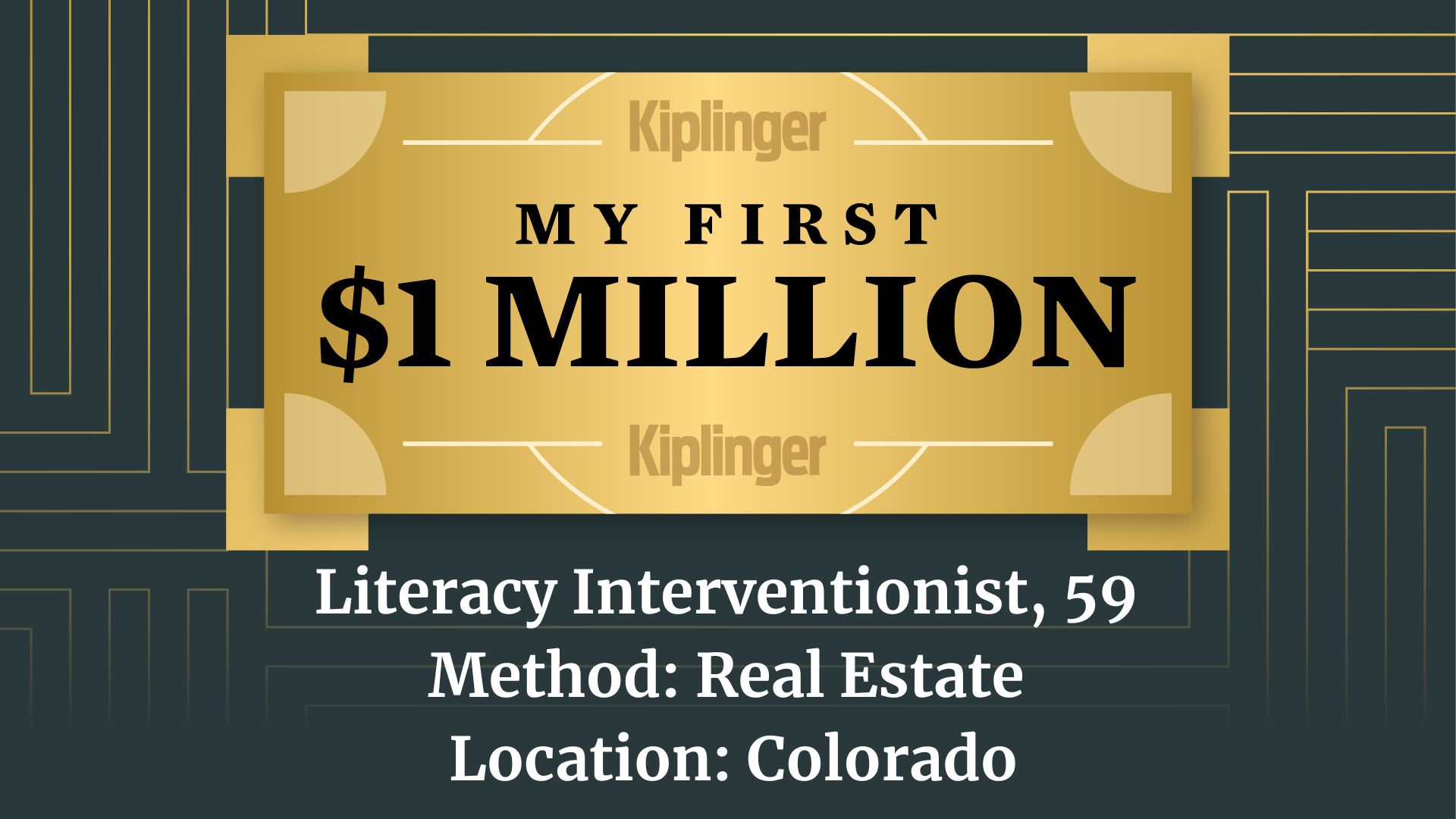A Simple Portfolio Is All You Need
It’s possible to build wealth with only a few funds—or even just one.


So many investment choices, so many potential portfolio decisions. The inventory of stocks, bonds, funds and other financial assets for sale is big enough to fill a big-box store. But there’s a downside to shopping at financial supermarkets: It injects complexity into the investing process.
That can lead to portfolio miscues, such as chasing highfliers that have already run up in price, investing in assets you don’t understand or buying a bunch of funds that own many of the same stocks (which means you’re less diversified than you think). “The more complex your portfolio is, the easier it is to get out over your skis,” says Matt Fleming, a wealth adviser at Vanguard Personal Advisor Services.
The good news? You can play it simple and build a portfolio using just one to three funds. If you choose correctly, you’ll get a low-cost, diversified mix of stocks and bonds that’s easier to track and manage. Here are three ways to build a slimmed-down, simple portfolio. (Returns and other data are as of September 10.)

Sign up for Kiplinger’s Free E-Newsletters
Profit and prosper with the best of expert advice on investing, taxes, retirement, personal finance and more - straight to your e-mail.
Profit and prosper with the best of expert advice - straight to your e-mail.
One-stop shopping. If stock picking or fund selection isn’t your strong suit, consider a target-date fund, a single-fund portfolio that holds stocks, bonds and sometimes cash in various combinations. The beauty of these savings vehicles, found in most 401(k) plans, is that the fund (which typically holds other funds) makes the investment decisions for you, including periodic rebalancing to make sure your mix of holdings doesn’t get out of line with your risk tolerance.
The fund managers determine how aggressive or conservative the fund’s asset mix should be based on how many years you are away from retirement (or another savings goal serving as your “target”). All you have to do is fund the account. “It puts your portfolio on autopilot, but pros are in the cockpit,” says Jeffrey Wood, an investment adviser at Lift Financial.
The closer you get to your golden years, the less risky your target-date portfolio becomes. The fund dials back more-volatile stock holdings and boosts the weighting in tamer bonds as your hair turns gray. If you’re 40 and want to retire at 65, you might consider a fund with a target date of 2045. T. Rowe Price Retirement 2045, for example, held roughly 90% in stocks and 10% in fixed-income investments at the end of the second quarter, according to fund tracker Morningstar. In contrast, retirees who own T. Rowe Price Retirement 2020 have just 51% in stocks and 49% in bonds.
A fund’s “glide path” (or how its portfolio transitions from aggressive to conservative over time) varies by fund firm. Over the long haul, a target-date series that has a larger stock allocation will likely post bigger returns but carry more risk.
A top target-date fund series to consider is T. Rowe Price Retirement, with expense ratios ranging from 0.53% to 0.64%. The series includes portfolios with holdings among more than two dozen other T. Rowe funds, including Small Cap Value, a member of the Kiplinger 25, the list of our favorite no-load funds. We also like Fidelity Freedom (0.59% to 0.75%). The series gives you access to top managers, such as Joel Tillinghast, of Fidelity Low-Priced Stock, and Steven Wymer, of Fidelity Growth. The Vanguard Target Retirement (0.13% to 0.15%) series of funds provides sweeping exposure to stocks and bonds in the U.S. and overseas by filling portfolios with a handful of lower-cost total-market index funds, such as Vanguard Total Stock Market Index, which owns virtually every publicly traded U.S. stock.
A balanced approach. The old-school balanced portfolio of 60% stocks, 40% bonds is another option to consider, as the bond portion provides diversification, income and a smoother ride with fewer wild price swings. Today, balanced fund managers have some leeway to tilt their portfolio weightings beyond the traditional 60-40 split depending on their market outlook; many balanced funds now have equity weightings of 70% or more. If stocks wobble, bonds will provide ballast. Balanced funds invest in growth-oriented and dividend-paying large-company stocks, as well as bonds ranging from U.S. Treasuries to investment-grade corporates.
“Going with a balanced approach is always a good idea,” says Josh Simpson, investment adviser at Lake Advisory Group. “Steady growth should always be the goal. People get in trouble when they try to hit home runs.” One downside, however, is that even with wiggle room to tweak their allocations somewhat, these funds may hold too few stocks, and as a result be too conservative for young investors with a very long investment time horizon.
Still, a good option to consider is Fidelity Balanced (symbol FBALX, 0.52%), which in the past year returned 27.6%, topping 88% of its category peers. According to the most recent report, the fund held 72% of its portfolio in stocks and 28% in fixed income; top holdings included Microsoft and Apple. Another solid choice is Dodge & Cox Balanced (DODBX, 0.53%), which delivered a 32.3% one-year return, topping 93% of peers, and had 68% in stocks and 32% in bonds at last report. The fund’s largest stock sector weighting was financials, which made up 24% of the portfolio and included top holdings such as Wells Fargo and Charles Schwab.
The whole market in three funds. This strategy, popularized by “Bogleheads” (investors who embrace the low-cost, index-fund approach espoused by the founder of Vanguard, the late John Bogle), includes investments in three asset classes: U.S. stocks, international stocks and U.S. bonds. The portfolio consists of index funds or exchange-traded funds that charge rock-bottom fees and invest in baskets of securities that cover an entire investment universe.
A popular approach is to buy one fund that invests in the total U.S. stock market, one that tracks the total international stock market and one that covers the total U.S. bond market. “It gives you exposure to everything,” says Simpson. Using Vanguard Total Stock Market Index (VTSMX, 0.14%), Vanguard Total International Stock Index (VGTSX, 0.17%) and Vanguard Total Bond Market Index (VBMFX, 0.15%), you’ll gain exposure to the equivalent of some 3,900 U.S. stocks, 7,500 foreign stocks and 18,000 U.S. bonds. (ETF versions of the funds are also available.) Building a similar portfolio using total market funds offered by providers such as Fidelity and iShares is just as easy.
To make this strategy work, make sure your target weightings of U.S. stocks, foreign stocks and bonds remain in line with your risk tolerance. And it’s on you to rebalance the portfolio periodically. Also, remember that the best you can do with index funds is match the gains of the index, minus any expenses. You won’t beat the market. But that’s okay. “Being average is fine, because so many people’s returns are below average,” Wood says.
One last piece of advice: For a simple portfolio to succeed, you must stick to the plan. “Even simple solutions fail if you bail at the wrong time,” says Vanguard’s Fleming.
Related content
- How to Find the Best Mutual Funds for Beginners
- Investing Mistakes Beginners Make and How To Avoid Them
- Should You Use a 25x4 Portfolio Allocation?
Get Kiplinger Today newsletter — free
Profit and prosper with the best of Kiplinger's advice on investing, taxes, retirement, personal finance and much more. Delivered daily. Enter your email in the box and click Sign Me Up.

Adam Shell is a veteran financial journalist who covers retirement, personal finance, financial markets, and Wall Street. He has written for USA Today, Investor's Business Daily and other publications.
-
 Retire in Malta for Quiet Coastal Perfection
Retire in Malta for Quiet Coastal PerfectionSeemingly remote yet easily accessible to other points in Europe, sunny Malta offers paths to citizenship and residency for families and retirees.
By Drew Limsky
-
 How This Literacy Interventionist Made $1 Million
How This Literacy Interventionist Made $1 MillionEver wonder how someone who's made a million dollars or more did it? Kiplinger's new My First $1 Million series uncovers the answers.
By Joyce Lamb
-
 Smart Ways to Invest Your Money This Year
Smart Ways to Invest Your Money This YearFollowing a red-hot run for the equities market, folks are looking for smart ways to invest this year. Stocks, bonds and CDs all have something to offer in 2024.
By Jeff Reeves
-
 Vanguard's New International Fund Targets Dividend Growth
Vanguard's New International Fund Targets Dividend GrowthInvestors may be skittish about buying international stocks, but this new Vanguard fund that targets stable dividend growers could ease their minds.
By Nellie S. Huang
-
 Best 401(k) Investments: Where to Invest
Best 401(k) Investments: Where to InvestKnowing where to find the best 401(k) investments to put your money can be difficult. Here, we rank 10 of the largest retirement funds.
By Nellie S. Huang
-
 7 Best Stocks to Gift Your Grandchildren
7 Best Stocks to Gift Your GrandchildrenThe best stocks to give your grandchildren have certain qualities in common.
By Dan Burrows
-
 How to Find the Best 401(k) Investments
How to Find the Best 401(k) InvestmentsMany folks are likely wondering how to find the best 401(k) investments after signing up for their company's retirement plan. Here's where to get started.
By Deborah Yao
-
 How to Master Index Investing
How to Master Index InvestingIndex investing allows market participants the ability to build their ideal portfolios using baskets of stocks and bonds. Here's how it works.
By Nellie S. Huang
-
 The Best Vanguard ETFs to Buy
The Best Vanguard ETFs to BuyThe best Vanguard ETFs all feature rock-bottom fees, large asset bases and long trading histories. Here are a few of our favorites.
By Jeff Reeves
-
 Donor-Advised Funds: A Tax-Savvy Way to Rebalance Your Portfolio
Donor-Advised Funds: A Tax-Savvy Way to Rebalance Your PortfolioLong-term investors who embrace charitable giving can easily save on capital gains taxes by donating shares when it’s time to get their portfolio back in balance.
By Adam Nash